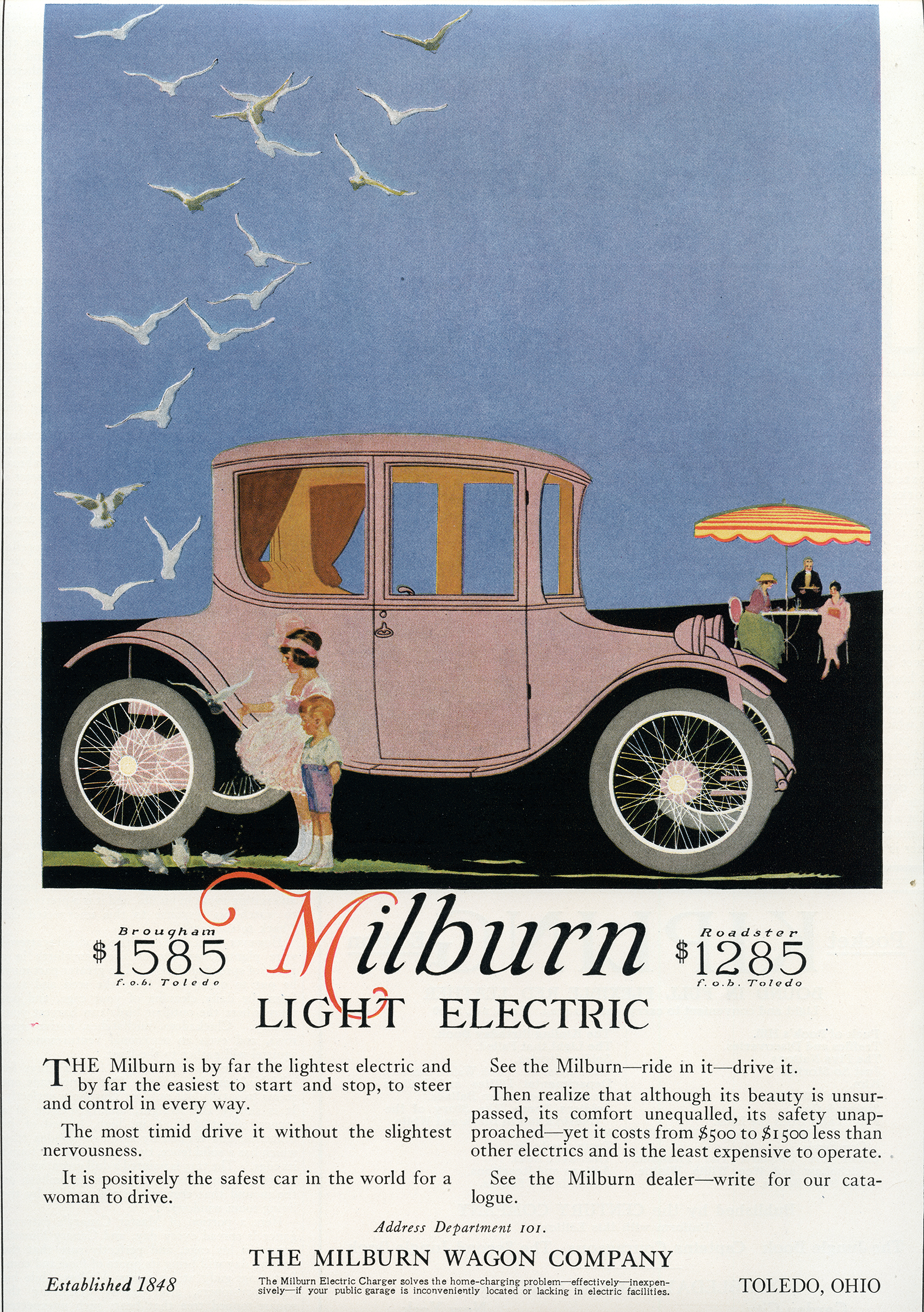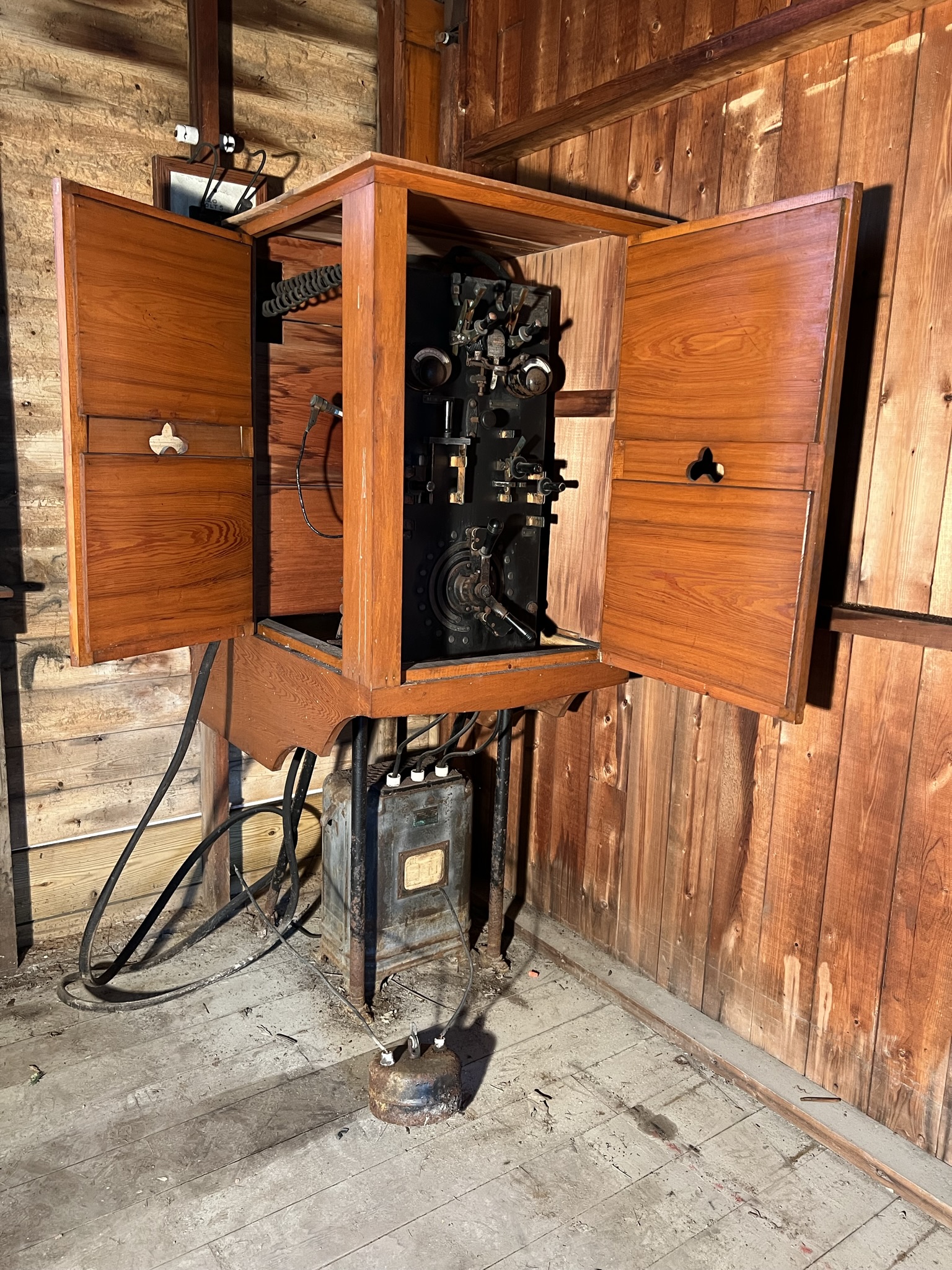Impressionist New England: Four Seasons of Color and Light
By Amanda Wastrom, Curator
Impressionism was my first art love. I grew up in New Hampshire, only about an hour north of Boston. My mother, a teacher and an art lover, would take me to museums in the city all the time. The Museum of Fine Arts, Boston was a particular favorite. We knew the galleries so well that I knew exactly where my favorite (and least favorite!) paintings were. I would send my mother into the gallery ahead of me so that I could make sure I wasn’t accidentally walking in on Watson and the Shark (that one really creeped me out).

In 1989, when I was 10 years old, we went to see an exhibition at the MFA titled Monet in the 90s. It was one of the museum’s blockbuster Impressionist exhibits, with each room full of Claude Monet’s most famous series: Rouen Cathedral, the water lilies, the haystacks. I remember being completely blown away at how the paintings seemed to come together and fall apart at the same time. Monet’s rich colors and thick paint reminded me of the crayons in my Crayola box. It felt like magic. After walking through the exhibition, we bought the catalog (which is still sitting on my bookshelf). Claude Monet, Mary Cassatt, Edgar Degas, August Renoir—I fell in love with these artists. I found I could stare for hours at those paintings and the vibrant, elegant world that they depicted.
As I grew up, as both a person and an artist, I jumped into the breadth and variety of the contemporary art world and my love for Impressionism fell to the back of my memories. I enjoyed the more provocative works with different kinds of things to say. Now so many years later, working on this project has felt a little bit like saying hello to an old friend. One that you haven’t seen in decades, but with whom you can just pick up where you left off. What has been most exciting for me, is that while I was very familiar with French Impressionism, this was a chance to discover a whole new crowd of artists, the American Impressionists.
Every exhibition is a story and that’s the first question you have to answer as a curator: what story are you telling? There’s a lot of looking—researching paintings and artists and places. Reading every book and exhibition catalog one can find. Visiting collections in person. In the beginning, I wasn’t sure what the story for this exhibition would be. There had been plenty already that covered the art historical narrative of American Impressionism from all angles, so that story didn’t need to be told again. What did excite me was the idea that so many of these artists did not live in New England full-time and specifically traveled to our region to paint. They could have traveled anywhere. What was it about New England that captured their imagination and inspired them?
As someone who has lived in New England all my life, with plenty of time spent in New Hampshire, Vermont, and Massachusetts, I thought I might have an inkling of what and why. When I became an adult, I could have lived anywhere, and I did have the opportunity to explore other parts of the world. But I came home. The more I have learned about the artists in this exhibition, I realized that the things that I love about this region are the same things inspiring Impressionist artists: nature and the outdoors, the variety of cultures and people you meet from town to town, and especially the seasons. I love the crisp blue sky of an early spring day and the warmth of a wood-burning fire in winter (or spring, if you live here on Cape Cod!). You’ll find references to both in this exhibit!
And so, this exhibition became a celebration of that: the story of this place, through the paintings and words of artists who loved it. I organized the exhibition by seasons because for one, accurately depicting season, time of day, and weather was one of the central challenges that Impressionist painters try to master. As Provincetown painter and longtime teacher Henry Hensche said, “An Impressionist (plein-air) painting done well will tell you the time of day and time of year, weather and even where it was painted as light effects change dramatically in different areas of the world.” And secondly, what is more quintessential to this part of the planet than the distinct seasons?
I invited New England-based poets Amanda Davis, Lauren Wolk, and Rich Holschuh to create or share works inspired by Fall, Summer, and Winter, respectively. I included a Spring-themed poem by Provincetown poet Mary Oliver, because how can you dip your toe into nature-inspired poetry on the Cape without her voice in the mix? My hope is that all of it comes together to speak to a sense of place as we go from spring to summer to fall to winter.
This exhibition explores the seasons, but also the places, and specifically, the summer art colonies that Impressionist artists have visited for about a century. The Northeast has several different towns—Provincetown and Gloucester in Massachusetts, Old Lyme, Mystic, and Cos Cob in Connecticut, Monhegan and Ogunquit in Maine—all with strong art traditions going back to the late 1800s, when Impressionists first visited.
This exhibition is not meant to be comprehensive or encyclopedic. There are many places and people, both historical and contemporary, not represented in this show. I suppose this show is quite personal in that way. It is my vision of New England. Just one vision. Another person would present an entirely different group of paintings.
Very few of the artist names in this exhibition are what I would describe as famous or household names. In the process of developing this exhibition, that became one of my goals: to highlight and showcase lesser-known artists. I also tried to balance work by male and female artists. My hope is that visitors to the gallery are surprised by the works that they see and are drawn to the label to see the artist’s name. There are plenty of exciting discoveries to be made.
Spring
Summer
Fall
Winter
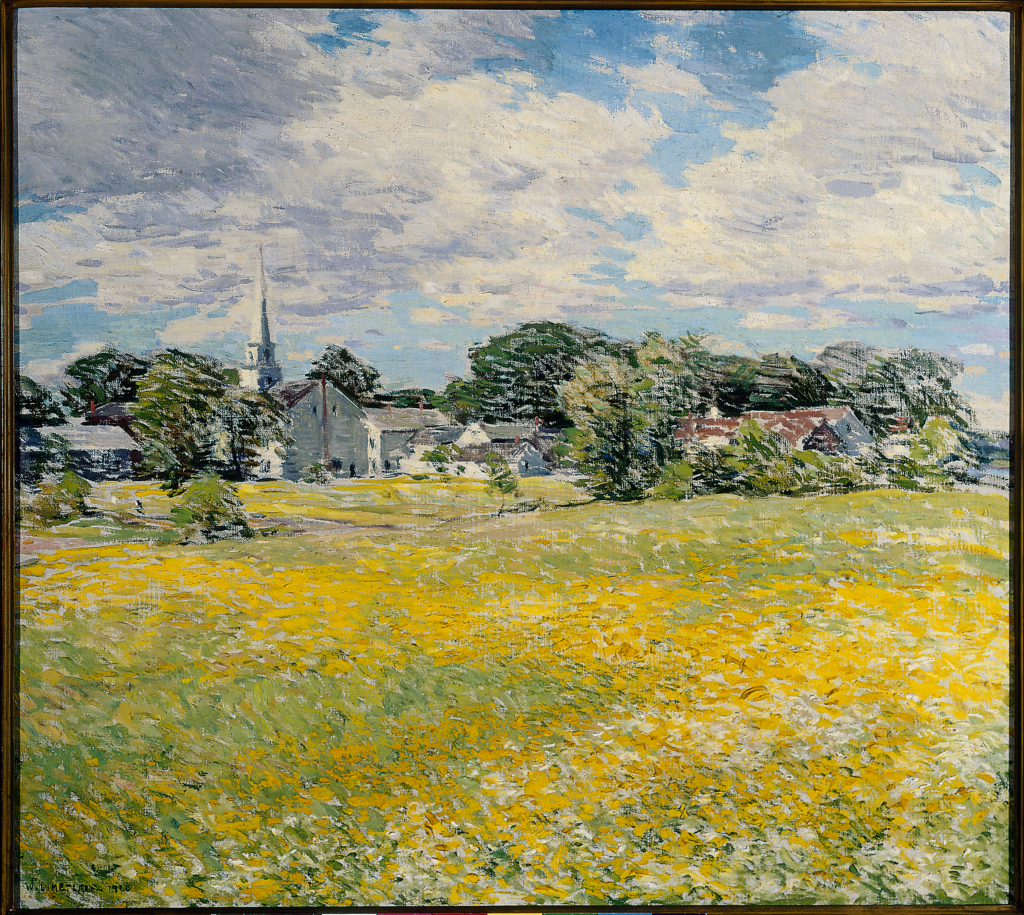
Buttercup Time, 1920 by Willard Leroy Metcalf (1858-1925)
Oil on canvas. Collection of the Telfair Museum of Art, Savannah, Georgia
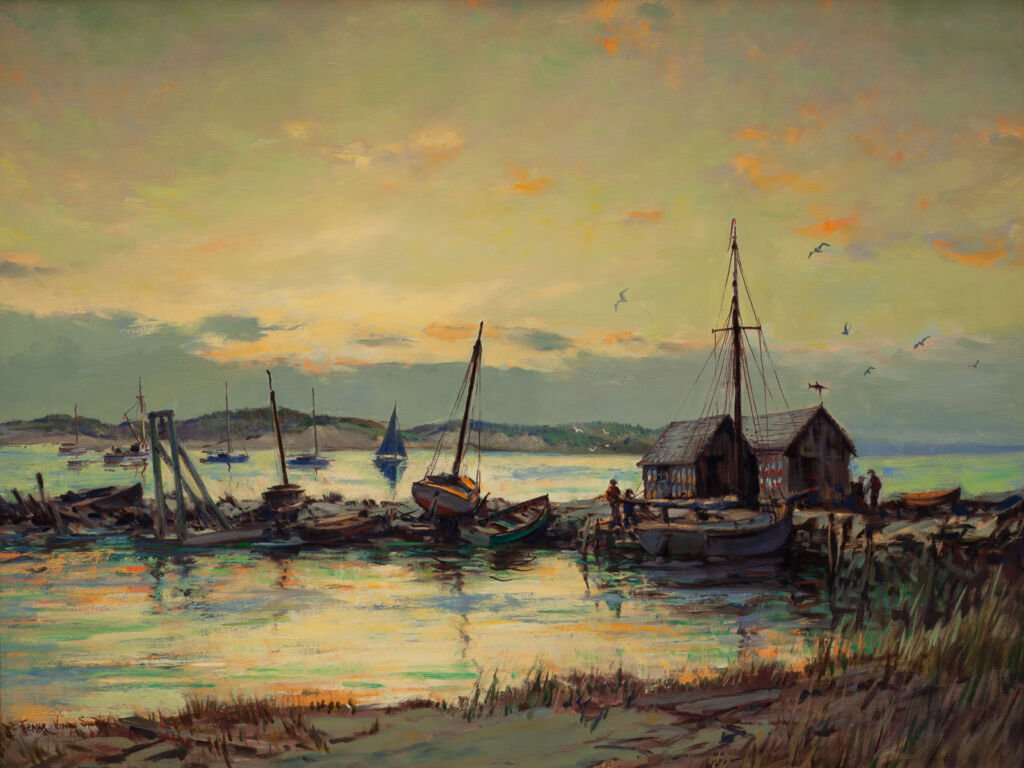
Wellfleet Sunset, c. 1950 by Frank Vining Smith (1879-1967)
Oil on canvas. Heritage Museums & Gardens
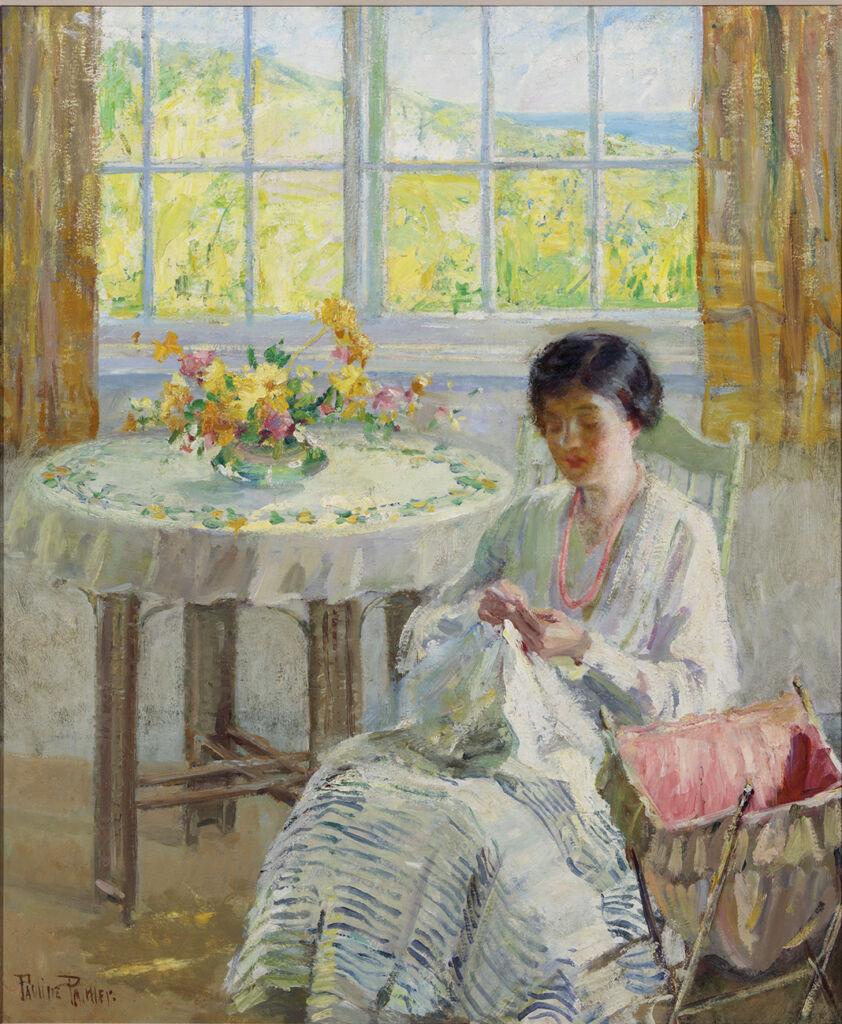
Woman Sewing, c. 1920s by Pauline Palmer (1867-1938)
Oil on canvas. Collection of Provincetown Art Association & Museum

Old House, South End, c. 1910 by Elmer Livingston MacRae (1875–1953)
Oil on canvas. Collection of the Greenwich Historical Society, Museum purchase with gifts from Friends of the Historical Society


